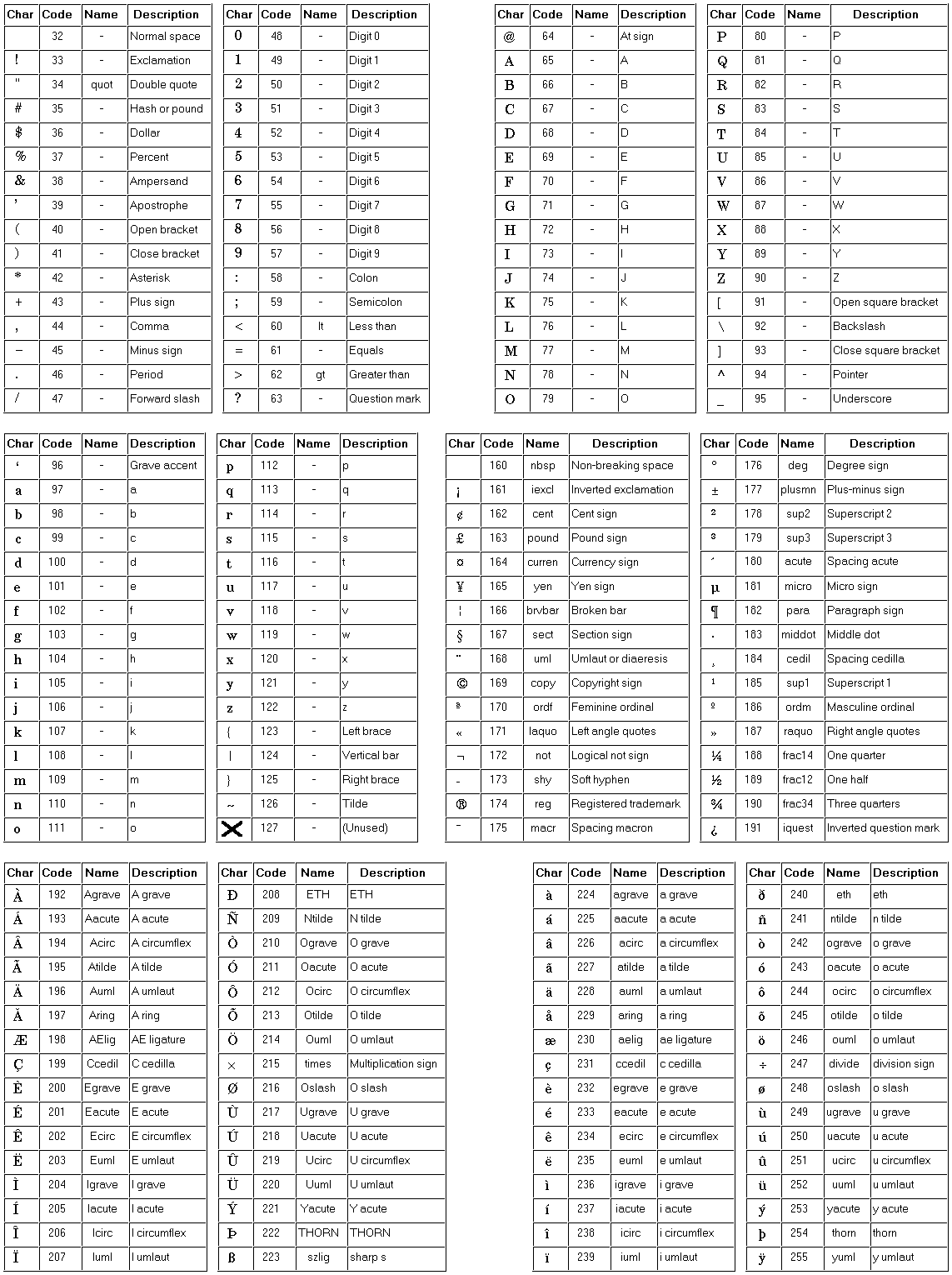
- #What is text encoding latin1 mac os#
- #What is text encoding latin1 code#
- #What is text encoding latin1 windows#
That reliably results in a new table being created with utf-8 encoding.
#What is text encoding latin1 windows#
I actually uploaded a latin1 dataset that had been created on a Windows host, and then attempted to recreate it in a Linux environment. I’ve tried to reproduce this behavior by intentionally creating a table with Latin1 encoding and then replacing its contents with a data step such as the above, but the result is always a table with UTF-8 encoding.ĭoes anyone have any idea why this older table remains in Latin1 after the change to our session encoding? Again, more a curiosity question than a problem, as I have no need to store mutli-byte characters is this table.Įarlier I said I had tried to reproduce the behavior by intentionally creating a table in latin1 and then trying to recreate it to see if it remained latin1. I would have expected the encoding to change to UTF-8 once our environment session encoding was changed.
#What is text encoding latin1 code#
I’ve noticed the table created by the above code still shows “latin1 Western (ISO)” as the Encoding scheme in PROC CONTENTS. Recently our SAS environment switched from Latin1 to UTF-8 session encoding. This code has been running for over a year with no issues. I have a table that gets created every night in our SAS Grid environment using a data step like the following: Only characters covered by the output encoding or that are given a suitable rendering in terms of it can be safely input.This is more of a curiosity question than a problem. It would be the same with the utf8 input encoding. One has to load a package providing a default output for \textyen, for instance textcomp. According to the description above, the latin1 option to inputenc defines the \textyen translation for this, but the T1 output encoding reserves no slot for this, so inputting ¥ results in a runtime LaTeX error. The Latin-1 encoding provides at slot 0xA5 (decimal 165) the yen character. Here's another issue that can pop up at times (see Available Characters with iso-8859-1).

Those declarations provide the necessary setup: the combinations and get translated into \"a and \ss respectively and everything works from now on as described for latin1. This is the reason why I prefer to always load fontenc before inputenc (though not really necessary). dfu file (Unicode definitions) is read before the document starts. Oh, wait! There's something more! Yes, in this case inputenc interacts with fontenc (which it doesn't for other input encodings): for every loaded encoding, the corresponding. The two packages are not connected, though it is best to call fontenc first and then inputenc. Inputenc allows the user to input accented characters directly from the keyboard įontenc is oriented to output, that is, what fonts to use for printing characters. The two packages address different problems. So if the last 2 paragraphs have been confusing (mainly because I'm confused) the main question is: What does fontenc what inputenc doesn't do and vice versa?

Is it then like latex maps the ä according to the latin1 to a character and since the document is encoded as something different than latin1 then gets encoded to something different again?
#What is text encoding latin1 mac os#
tex encoded as lets say the mac os latin then the first option compiles but shows the wrong characters for the ä ü ö's. tex file on another OS depending on which option I have chosen?)? Now why should I pick one over the other or use both? Which problems could occur (Do they occur if I use the same. tex file it seems it doesn't matter which option I chose they both work. So now if I create a new document and save it as a latin-1 encoded. Which isn't really comfortable, or I can use an additional package.


So I come from the german speaking part of Switzerland and naturally I need ä ü ö a lot when I write german texts.


 0 kommentar(er)
0 kommentar(er)
